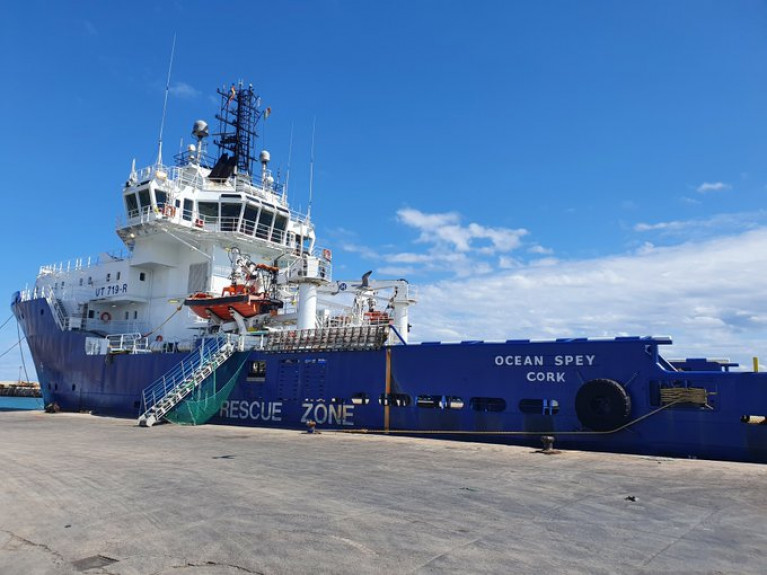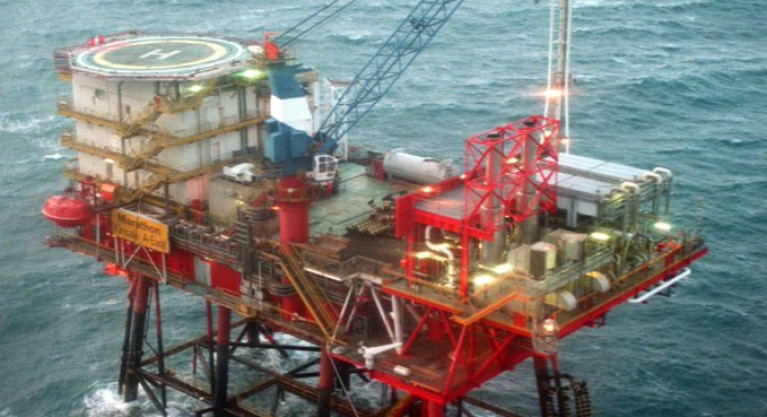Displaying items by tag: Kinsale Gas Field
Marine Notice: Inshore Pipeline Survey at Kinsale Gas Field
PSE Kinsale Energy Limited is undertaking an inshore pipeline survey along the route of a decommissioned pipeline from the Kinsale Gas Field.
Works will focus on the pipeline in the Celtic Sea close to Inch Beach in Co Cork.
The estimated duration of the survey is up to two days within a window from Friday 7 to Sunday 30 April, subject to weather and operational constraints.
Survey works will be conducted by the survey vessel Barnacle (callsign EIA2122) which will operate during daytime only and will display appropriate lights and signals.
Within the defined work areas, the vessel will be undertaking an acoustic survey using a multi-beam echo-sounder and a towed side-scan sonar.
All other vessels, particularly those engaged in fishing, are requested to leave a wide berth during the operations and to keep a sharp lookout in the relevant areas. The work vessel can be contacted on VHF Channel 13.
A map of the survey area, relevant coordinates and contact details are included in Marine Notice No 19 of 2023, attached below.
Continuing its Kinsale area decomissioning project, PSE Kinsale Energy Limited advises that its Kinsale Head platform removal campaign will commence later this month and is expected to run through to September.
Works will be conducted by the semi-submersible, self-propelled crane unit Thialf (callsign 3EAA4) assisted by a number of cargo barges towed by the MV Kolga (callsign PCTR) and MW Bylgia (callsign PBMQ). The Merel G (callsign HO6511) will be used for crew transfer between the vessels and shore.
Backloading of removed compoents onto the cargo barges is planned for the offshore location but may be performed inshore depending on environmental conditions.
All work vessels may be contacted on VHF Channel 16 throughout the operation. All other vessels, particularly those engaged in fishing, are requested to give the vessels a wide berth and to keep a sharp lookout in the relevant areas.
Details of relevant coordinates and contact information can be found in Marine Notice No 24 of 2022, attached below.
Decommissioning of Kinsale Gas Field Structures to Begin in May
May 10 has been set as the start date for decommissioning works on the subsea structure in the Kinsale and Seven Heads Gas Fields on the South Coast.
The Kinsale Energy company which will undertake the work has told the Department of Transport they should take an estimated 20 days.
The Kinsale Area gas fields are located in the Celtic Sea, approximately 40km to 70km off the south coast of County Cork. The fields include Kinsale Head, Ballycotton, South-West Kinsale and Seven Heads gas fields, which were developed between 1978 and 2003.
The Department has issued Marine Notice No.20 with more details and it is downloadable below.
Cork Harbour's Mainport Based Vessel Is Bid Farewell As the Final Kinsale Gas Field Support Ship
The Cork Harbour based Ocean Spey has been sold by the Mainport Group which operated the supply/standby support vessel for the past five years at PSE's Kinsale Gas Field which was decommissioned this year, writes Jehan Ashmore.
According to Mainport, the Ocean Spey departed their fleet and made a delivery to Castellan, Spain to new owner, Open Arms.
Afloat add Open Arms is a Barcelona based non-profit organization that aims to protect the lives of the most vulnerable, provide first-aid at sea and in operating refugee rescue vessels in the Mediterranean Sea.
The 66m Ocean Spey, Afloat noted on AIS made its last departure from Rushbrooke last month and arrived a week later to Burriana, located south of Castellan, where the Irish tricolor was lowered for the last time.
The Cork registered 1,864grt ship which Mainport acquired in 2016, had serviced the two Kinsale Gas platforms, located approximately 50kms off the south coast from where gas was first extracted in the late 1970's. As Afloat reported earlier this year, the gas had depleted, leading to the decommissioning of the gas field subwells and likewise associated platforms.
The role of the Ocean Spey in the Celtic Sea followed a succession of ships that Mainport was contracted to provide the gasfield with services for more than 35 years and through various owners. A slightly smaller vessel, Pearl of 1,579grt had performed the same role until Mainport disposed of this vessel.
Ocean Spey which has anchor handling capabilities was built in 2000 and had previously worked in the North Sea based out of Aberdeen, the oil capital of Scotland.
A multimillion euro contract to decommission one of the State’s largest gas fields was won to a division of the Stena Group which includes the large ferry operator.
The move comes after the Government earlier this year, as the Irish Times reports, formally consented to a plan submitted by Kinsale Energy to end production at the Kinsale gas fields, which lie approximately 50 km off the south coast of Cork.
Work on decommissioning is due to start in April 2021 with Stena Drilling appointing AGR Well Management as the lead contractor managing the work. Overall, there are 10 wells to decommission.
Gas production from the wells was shut in on July 5th when all the gas reserves in the various fields were depleted. The wells will now be permanently plugged with cement and associated facilities – platforms, pipelines, cables, subsea structures and onshore terminal – will be decommissioned.
For further reading on the steel platform installations click here.






























































